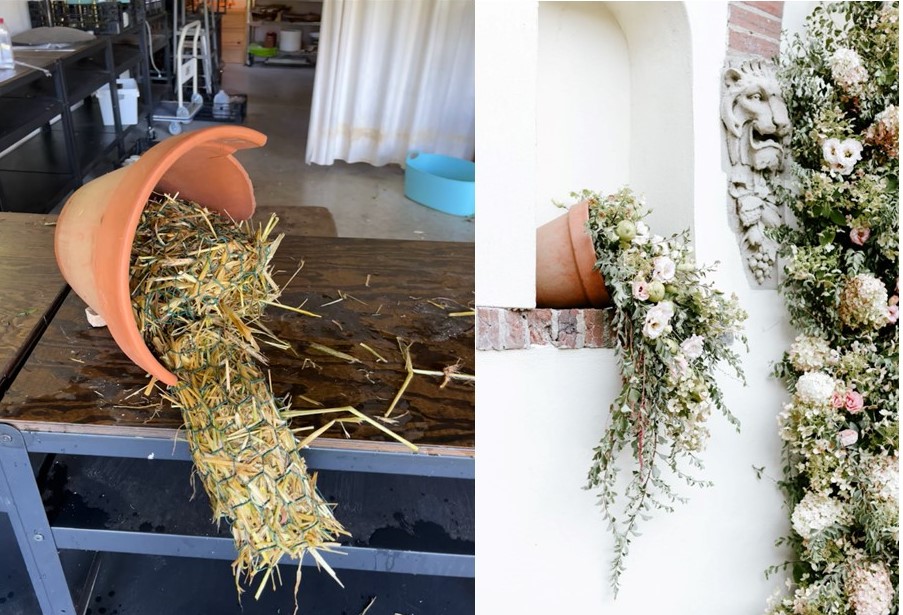Floral foam, or Oasis, is a green brick made of hundreds of microplastics, designed to be soaked in water and used in floral designs, holding stems upright and purported to hydrate stems for long periods of time. What may not be commonly known about floral foam is that it contains Phenol, Carbon Black, and Formaldehyde, all known carcinogens.
Not only is this extremely harmful to the environment in its production, but also to every person that handles it on a regular basis, which is basically every floral designer out there. Beyond being irritating to the skin, eyes and respiratory tract, studies have shown that prolonged exposure to these chemicals can cause cancer and negatively affect fertility.
Sadly, it’s not just florists that are being affected by this product, there’s ample proof that microplastics from floral foam are ingested by marine life. It is a single use plastic. Every time a beautiful wedding arbor is constructed with floral foam, it’s broken down and the bricks are thrown into a landfill where it will never break down, ever. The water that it’s soaked in prior to being used is dumped down the drain and deposits thousands of plastic particles into the sewage system.
The question we have to ask is why are we still using floral foam when there are so many readily available alternatives? There’s a movement of designers saying “No!” to using foam and contributing to the carbon footprint of the floral design business. They’re saying yes to sustainability and yes to locally grown flowers, both of which make for happier, healthier design teams and customers.
Searching #foamfree, #nofloralfoam and #sustainablefloristry on Instagram is inspiring and enlightening. Below are photos of some of our favorite foam free alternatives including ways to use chicken wire in centerpieces and installs, flower frogs, and biodegradable foam alternatives. By avoiding floral foam and using locally-grown, chemical-free flowers in your designs, you’re taking huge leaps in changing our industry little by little.
Option 1: Flower frogs

Option 2: Chicken wire in vases and urns instead of foam

Option 3: Biodegradable foam product called Agrawool

Option 4: Chicken wire and straw “forms” to hang on arches, etc.


